Fermentation is the easiest way to preserve food. These delicious fermented mushrooms have the option to be finished with olive oil for an Italian-style condiment or appetizer.
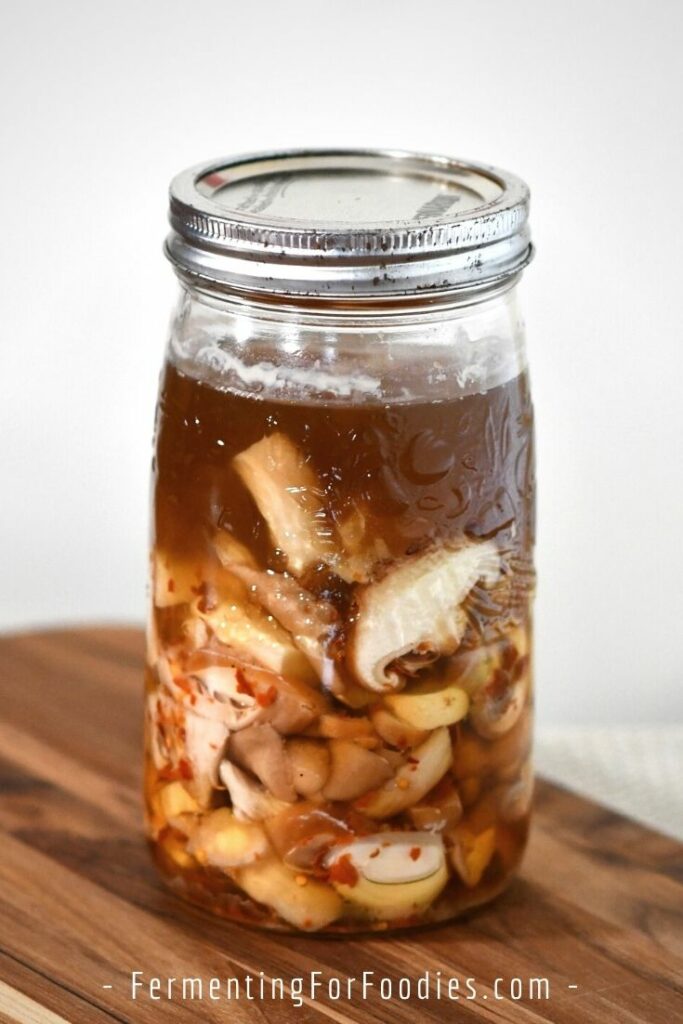
I can’t help but want to ferment EVERYTHING. However, fermented mushrooms are particularly delicious. It’s also a great way to preserve mushrooms. And we happen to live in mushroom-growing territory!
Brad grew up foraging for mushrooms. However, without a hardwood forest nearby, we’ve found the most reliable way to get mushrooms is to grow them ourselves! This is best done in the wet fall months, October to November, and February to April where we live. At this point, the conditions are perfect for mushroom growing. This means we eat a lot of mushrooms and can preserve some for the hotter months of the year.
Fermentation is the simplest way to preserve pretty much any type of fruit or vegetable. It doesn’t require cooking. All you have to do is pack everything into a jar and you’re done!
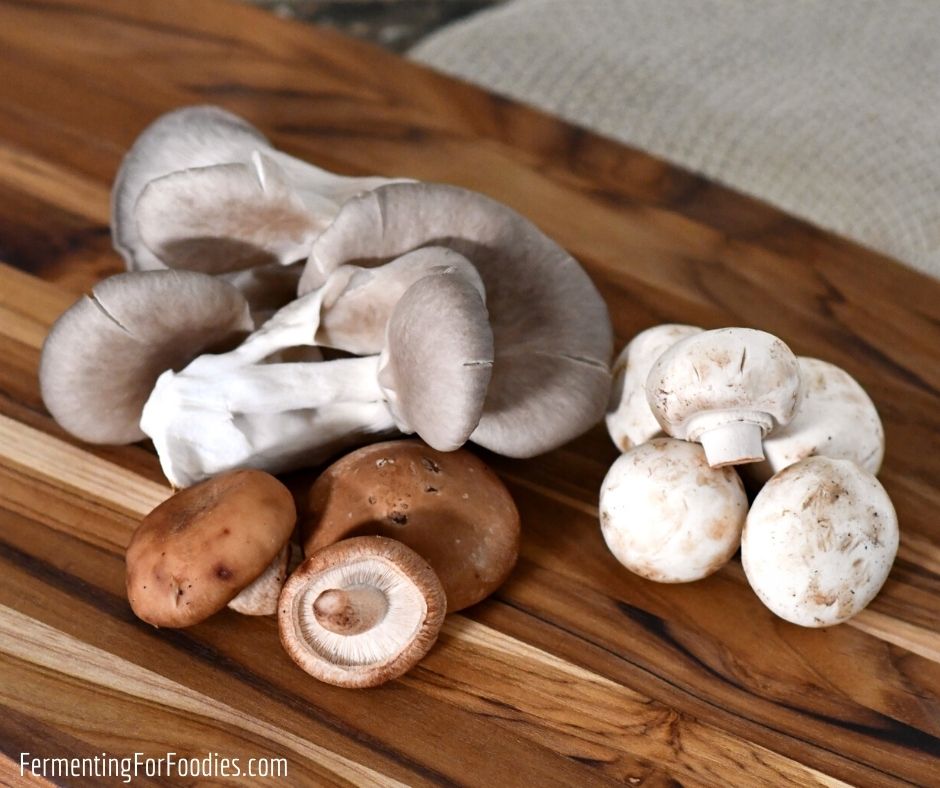
Finished in Oil
I decided to include the option of finishing the mushrooms in oil in this recipe. This isn’t necessary as salt-brine-picked mushrooms are delicious straight from the jar. However, it does add a level of sophistication when serving these mushrooms as part of an appetizer or condiment.
Here’s how I recommend using this recipe:
- Use fermentation to preserve mushrooms when in season. If you are careful about cleanliness and use a jar designed for fermentation (like a fido or airlock), then fermented mushrooms can be stored in a cool dark location for a really long time.
- Once you’ve opened the jar, move your mushrooms to the fridge. At this point, you can pack them in oil. I recommend only packing a small number of fermented mushrooms in oil at a time. This way you can reuse the oil for several batches of fermented mushrooms. It also allows you to decide whether you want to serve brined mushrooms or oil-packed mushrooms.
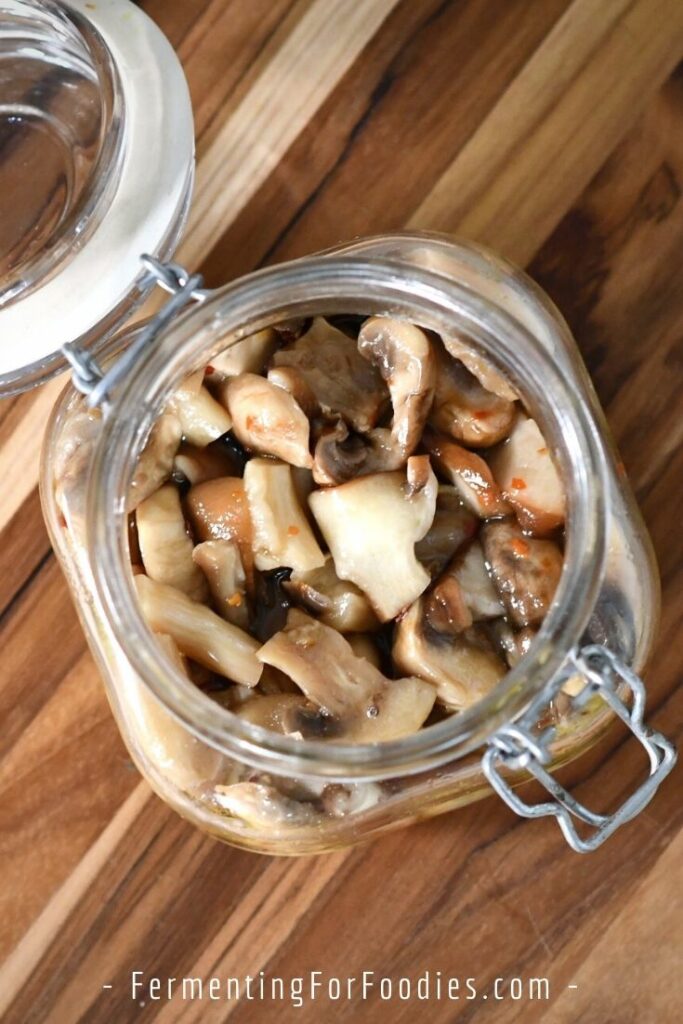
Fermented Mushrooms
These delicious fermented mushrooms have the option to be finished with olive oil for an Italian-style condiment or appetizer. See the section above for details on how I deal with my mushrooms after fermenting.
- Prep Time: 15 minutes
- Total Time: 15 minutes
- Yield: 1 quart jar 1x
- Category: Appetizer
- Method: Fermenting
- Cuisine: Italian
- Diet: Vegan
Ingredients
- 3 1/2 cups of mushrooms (single or mixed varieties)
- 2 cups of water (chlorine-free)
- 1 Tbsp salt
- 2 cloves of garlic
- Additional flavors (see notes)
- 1/4 cup of olive oil (optional, for finishing after fermenting)
Instructions
- Gently wash the mushrooms, removing any dirt. Feel free to slice larger mushrooms. I find that bite-sized pieces are usually best for more serving options.
- Dissolve the salt in 1 cup of water in a 1 quart (1 L) glass jar for fermenting. Place the garlic and other flavors in the bottom of the jar.
- Pack the mushrooms in as tightly as possible, without actually damaging the mushrooms. Add a well-fitting weight to keep the mushrooms submerged under the brine. Mushrooms are a fungus and tend to mold if they are above the brine.
- If you plan on fermenting for more than 5 days, be sure to use a jar with a fermentation-specific lid to prevent contamination. Fido jars or mason jars with airlocks are two options.
Finishing With Oil
- Fermented mushrooms are delicious straight from the brine. However, if you wish to finish it in oil, I recommend waiting until you’re ready to open the jar. Properly packed fermented mushrooms should last a long time in a cool, dark location. However, once you open the jar, it will need to be stored in the fridge.
- To avoid having to use a lot of oil, I usually only pack 1 cup of mushrooms in the oil at a time. The oil can be reused 3 to 4 times.
- Using a clean fork, remove about 1 cup of mushrooms from the brine and pack them into a clean 1-cup jar. It’s fine if a bit of brine ends up in the jar. There’s no need to dry or rinse the mushrooms.
- Pour the oil over top. Cap with an air-tight lid and store in the fridge for up to 4 weeks.
Notes
- Feel free to add fresh herbs to this ferment. Place whole stalks in the bottom of the jar to prevent them from floating, and creating a potential source of contamination. A sprig of dill is a traditional flavor option. Oregano, parsley, rosemary, and thyme are all delicious options. For a bit of a kick, add 1 tsp of crushed red pepper flakes. (I like red pepper flakes, Brad prefers dill).
- If you are new to fermenting, please read up on how to ferment vegetables, especially if you plan on storing your fermented mushrooms for more than a few weeks.
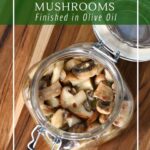
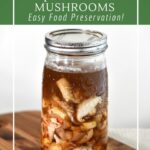
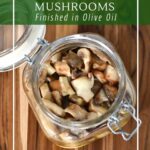
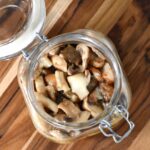
Leave a Reply